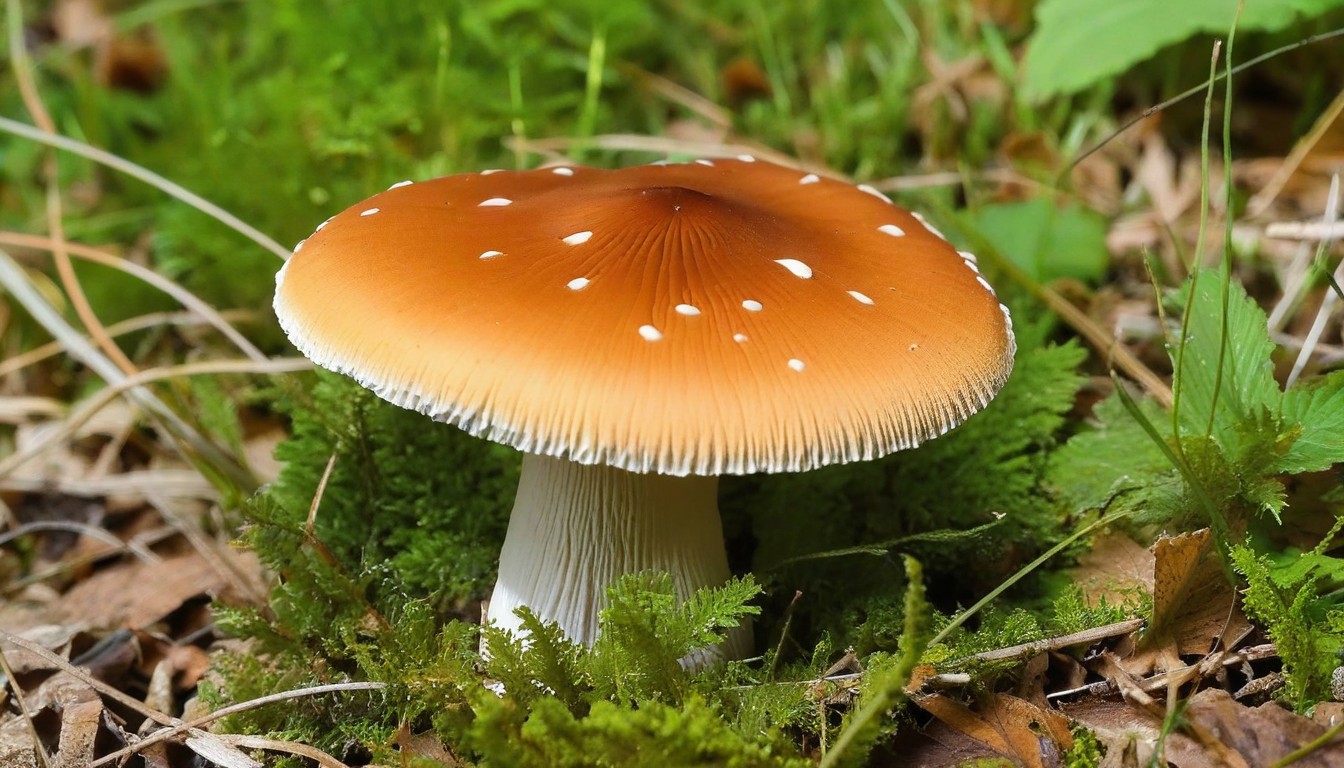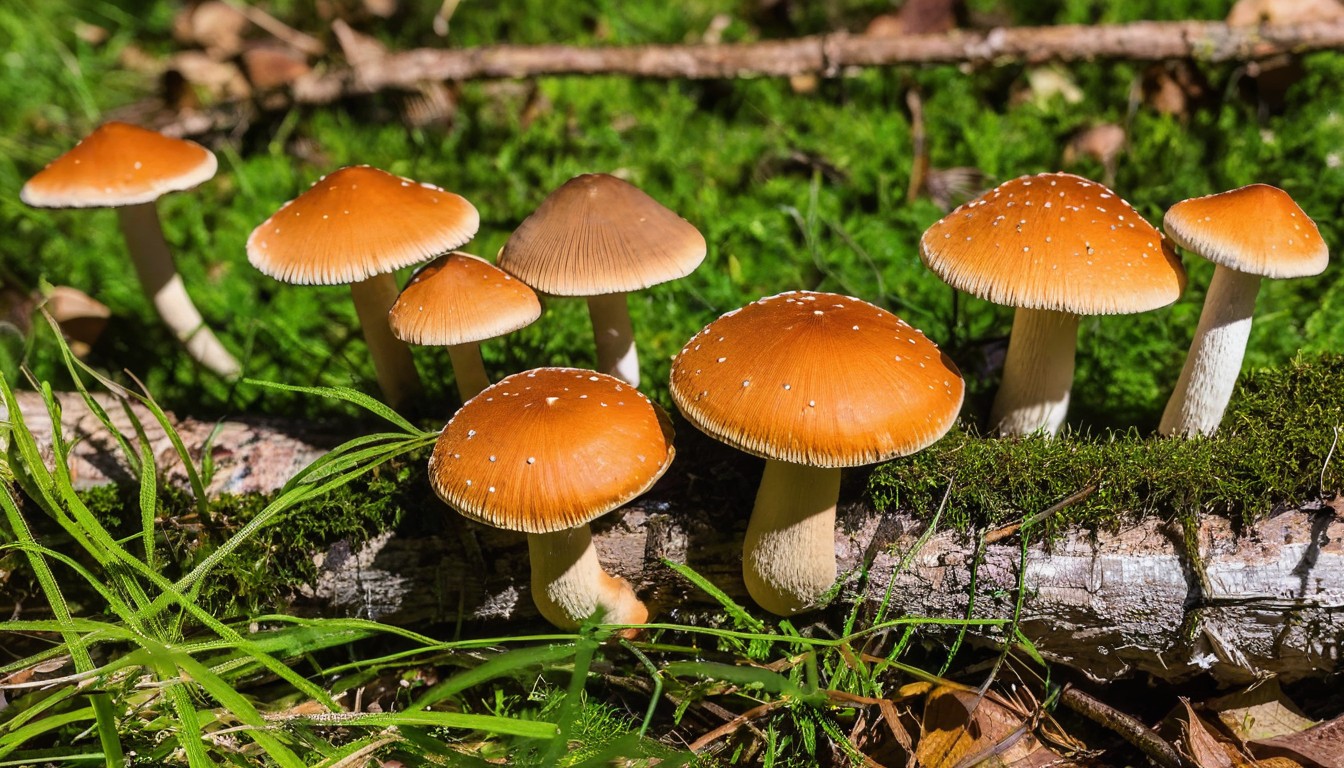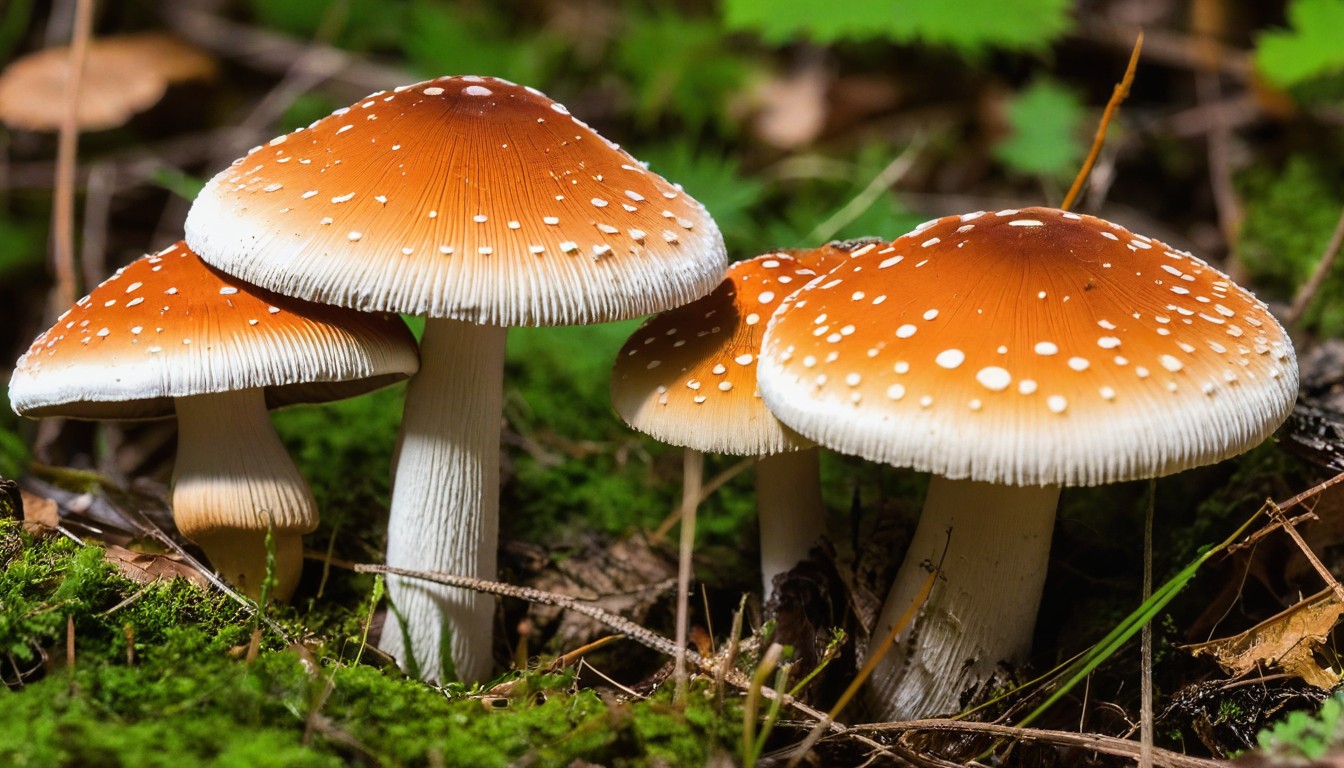When we think of the great outdoors, we might imagine towering trees and winding streams teeming with wildlife. But there is a whole other world waiting to be discovered beneath our feet – the mysterious and fascinating realm of common mushrooms in Maryland.
These often-overlooked fungal organisms play a crucial role in the healthy functioning of our local ecosystems, from decomposing organic matter to forming symbiotic relationships with other plants and animals. And for those willing to venture out with a curious eye and an open mind, exploring Maryland’s diverse array of mushroom species is an adventure like no other.
Key Takeaways:
- Common mushrooms in Maryland are integral to the local ecosystem.
- Exploring the diverse world of mushrooms in Maryland can be a rewarding and exciting adventure.
- Take precautions when foraging for mushrooms to avoid poisonous species.
- Some of Maryland’s common mushrooms have unique medicinal properties.
- Mushroom hunting can help deepen our understanding and appreciation of the natural world.
Why Explore Mushrooms in Maryland?
Maryland’s forests are home to a diverse array of mushroom species, each with unique ecological roles, cultural significance, and potential medicinal properties. Understanding and exploring these fascinating fungi can provide a deeper appreciation for the natural world and offer insights into the complex relationships between different organisms.
Mushrooms play an essential role in forest ecosystems, serving as decomposers, mycorrhizal partners, and symbiotic associates with other organisms. Through their interactions with plants and animals, mushrooms help to maintain soil health, regulate nutrient cycling, and promote overall biodiversity.
In addition to their ecological importance, mushrooms have a rich cultural history, with many species being used for food, medicine, and spiritual practices. The study of mushrooms can offer a glimpse into different cultures and their relationship with the natural world, providing a deeper understanding of our shared history and traditions.
Finally, the medicinal properties of various mushrooms are an area of ongoing research, with some species showing promising results in areas such as immune function, cancer treatment, and neuroprotection. Exploring the potential health benefits of mushrooms can open up new avenues for scientific inquiry and lead to new treatments for a wide range of diseases and conditions.
Identifying Maryland’s Common Mushrooms
Exploring Maryland’s forests can yield a diverse array of common mushrooms, each with their unique features and habitats. Here are some tips to help identify these fungal treasures:
Color
A mushroom’s color is often the first and easiest characteristic to observe. Colors can range from white, brown, yellow, orange, red, purple, and even blue or green. However, it’s essential to note that while color can help identify some mushrooms, it’s not always a reliable indicator of edibility.
Shape
The shape and size of a mushroom can also be an important identifying feature. Some mushrooms have caps that are smooth and round, while others may be funnel-shaped or convex. The stem can also vary in size and shape, being thin and long, or thick and stubby.
Gills
Many common mushrooms have gills that radiate out from the center of the cap. Gills can be closely spaced or widely spaced apart and come in a range of colors, from white to dark brown or black. It’s important to note that while gills can help in identification, poisonous mushrooms can also have similar gill patterns to edible mushrooms.
Spore Print
Obtaining a spore print is another useful identification tool. You can do this by placing a mature mushroom cap on a piece of paper, covering it with a bowl, and leaving it for several hours. The spores will fall onto the paper, revealing their color, which can aid in identification.
|
Mushroom |
Features |
Habitat |
Seasonality |
|---|---|---|---|
|
Morel |
Honeycomb-shaped cap, hollow stem |
Deciduous forests, near dead or dying trees |
April to May |
|
Chanterelle |
Bright yellow, funnel-shaped cap, thick stem |
Mixed forests, near hardwood trees |
July to September |
|
Chicken of the woods |
Bright yellow/orange, soft and fleshy texture |
Near oak trees, dead or dying wood |
July to October |
By familiarizing yourself with the distinctive features, habitat, and seasonality of various common mushrooms in Maryland, you can safely and confidently identify these fascinating fungi.
Safe Mushroom Foraging Practices in Maryland

If you’re planning to forage for mushrooms in Maryland, it’s crucial to adhere to safe foraging practices. These practices include:
- Proper identification: Always be 100% certain of a mushroom’s identity before consuming it. If in doubt, don’t pick it.
- Ethical considerations: Avoid over-harvesting mushrooms and damaging their natural habitat. Leave some behind for others to enjoy.
- Precautions against toxic or poisonous mushrooms: Some mushrooms in Maryland can be lethal if ingested. Be aware of the most toxic species and avoid them at all costs.
To ensure safe foraging, consider bringing along a guidebook or consulting with experienced foragers in the area. It’s also important to be aware of any regulations or restrictions on mushroom foraging in specific regions.
By taking these precautions and making safe foraging practices a top priority, you can enjoy the bountiful and delicious world of Maryland’s mushrooms with peace of mind.
Edible Common Mushrooms in Maryland
Exploring the edible mushrooms in Maryland can lead to some delicious culinary experiences. Below are some commonly found edible mushrooms in the region, along with their preparation and cooking methods to make the most of their delicious flavors and textures:
|
Mushroom Name |
Culinary Uses |
Preparation and Cooking Methods |
Look-Alike Species to Avoid |
|---|---|---|---|
|
Best used in sauces, soups, or fried as a side dish |
Sauté with butter, olive oil, and garlic for a delicious flavor. Can also be dried or pickled for long-term storage. |
Jack-o-Lantern Mushroom | |
|
Black Trumpet Mushroom |
Pairs well in creamy pasta dishes or as a topping for steak or chicken |
Sauté with butter, garlic, and shallots, then add cream and Parmesan cheese. Alternatively, can be pan-fried with breadcrumbs. |
False Chanterelle Mushroom |
|
Hen of the Woods Mushroom |
Delicious when roasted, grilled, or used in soups and stews |
Marinate with olive oil, soy sauce, and garlic, then grill or roast until crispy. Alternately, can be battered and fried. |
Look-alike species can include toxic varieties of Polypore mushrooms |
It is essential to avoid any poisonous mushroom species when foraging for edible mushrooms in Maryland. Always double-check your mushroom identification and use a trusted resource or expert guide if you’re unsure.
Medicinal Properties of Maryland’s Mushrooms

Maryland’s forests are home to a vast array of mushrooms, and many have been used for medicinal purposes for centuries. While research on the medicinal properties of mushrooms is ongoing, there is growing evidence to suggest that certain species may hold promise for treating various conditions.
Reishi Mushrooms (Ganoderma lucidum)
Reishi mushrooms have been used in traditional Chinese medicine for thousands of years, esteemed for their immune-boosting properties. Recent studies suggest that reishi mushrooms may have anti-inflammatory and anti-cancer effects, as well as potential benefits for cardiovascular health.
|
Potential benefits of reishi mushrooms: |
Dosage and Cautions: |
|---|---|
|
– Reduce inflammation – Boost immune system – Combat fatigue and depression – Lower blood sugar and cholesterol – Support liver function – Protect against cancer |
– Dosage varies depending on the form of reishi – Side effects are rare, but may include upset stomach and dry mouth – Reishi can interact with certain medications, including blood thinners |
Lion’s Mane Mushrooms (Hericium erinaceus)
Lion’s mane mushrooms are known for their unique appearance and delicate texture, but they may offer much more than just culinary appeal. Studies suggest that lion’s mane may have neuroprotective effects and could improve cognitive function, making it a potential treatment for certain neurological disorders.
|
Potential benefits of lion’s mane mushrooms: |
Dosage and Cautions: |
|---|---|
|
– Improve cognitive function – Protect against neurological disorders – Stimulate nerve growth – Reduce inflammation and oxidative stress – Boost immune function |
– Dosage varies depending on the form of lion’s mane – Side effects are rare, but may include mild digestive upset – Lion’s mane may interact with certain medications, including blood thinners |
While more research is needed to fully understand the medicinal properties of Maryland’s mushrooms, these two species offer a glimpse into the potentially valuable role that fungi can play in promoting health and wellness.
Common Mushrooms and Maryland’s Ecosystem

Common mushrooms play a vital role in maintaining Maryland’s ecosystem. They help in nutrient cycling, as they break down organic matter, and work symbiotically with plants in the form of mycorrhizae. Through this relationship, they aid in plant growth and survival by transferring essential nutrients and water.
The effect of mycorrhizae on the growth, survival, and competitiveness of seedlings is one of the most profound effects of fungi on forest ecosystems – John Dighton
Not only do common mushrooms aid in plant growth, but they also support a diverse range of organisms, including insects, birds, mammals, and other fungi. Mushrooms provide food and shelter for a variety of creatures, and their presence can indicate a healthy and thriving ecosystem.
The Impact on Nutrient Cycling
As decomposers, common mushrooms are critical in the process of nutrient cycling. They break down dead organic matter such as leaves, wood, and roots, returning nutrients to the soil. This process allows nutrients to be recycled back into the environment, making them available to other organisms. Without mushrooms, many essential nutrients would be lost, making it difficult for plants and other organisms to survive.
Symbiotic Relationships with Plants
The relationship between fungi and plants is crucial for both parties. In exchange for sugars and other nutrients provided by plants, common mushrooms form mycorrhizal associations with them, helping to absorb water and nutrients which would otherwise be inaccessible. These associations can make it possible for plants to colonize and survive in challenging environments.
Impact on Other Flora and Fauna
Common mushrooms support a diverse range of organisms, from insects such as ants and flies, to larger animals such as deer and squirrels. Some mushrooms even act as hosts for other species of fungi. Their critical role in the food chain makes them a valuable component of the ecosystem.
|
Mushroom |
Known Associations |
|---|---|
|
Chanterelle |
Squirrels, white-tailed deer, and insects such as ants and flies |
|
Matsutake |
Wildlife such as bears, squirrels, and deer. Also supports the growth of morel mushrooms. |
|
Oyster Mushroom |
Supports the growth of other fungi, including Armillaria, and provides food for a variety of insects. |
The study of common mushrooms and their role in Maryland’s ecosystem is vital for our understanding of the interconnectedness of the natural world. Their contribution to nutrient cycling, symbiotic relationships with plants, and impact on other flora and fauna underscores the importance of protecting these organisms and ensuring their continued existence in the state’s forests.
Unique Mushrooms of Maryland

Maryland’s forests are home to a diverse array of mushrooms, including some unique and rare species that can be found nowhere else. Here are some of the most fascinating discoveries to be made:
|
Name |
Description |
Location |
|---|---|---|
|
Black Trumpet |
A delicate, trumpet-shaped mushroom with a blackish-brown cap and wavy edges. It has a smoky flavor and is highly prized by chefs. |
Found in deciduous forests in late summer and fall. |
|
Hen of the Woods |
A large, frilly mushroom with overlapping, fan-shaped caps that resemble the feathers of a hen. It has a meaty, savory flavor and is used in many Asian dishes. |
Commonly found at the base of oak trees in fall. |
|
Matsutake |
A fragrant, pine-scented mushroom with a brownish cap and white gills. It is highly prized in Japanese cuisine and can command a high price. |
Grows in coniferous forests in late summer and fall. |
These unique mushrooms play an important role in Maryland’s biodiversity, providing food and habitat for other organisms. It’s important to respect these natural treasures by taking care not to damage or disturb them while exploring the wilderness.
Conclusion
Exploring the common mushrooms found in Maryland’s forests is a fascinating and rewarding activity. From the ecological role they play in the ecosystem to their cultural significance and potential medicinal properties, mushrooms offer a wealth of knowledge and benefits to those who seek to understand them.
By learning how to identify different types of common mushrooms, practicing safe foraging techniques, and understanding their culinary and medicinal uses, you can unlock the full potential of these fungal treasures. So, what are you waiting for? Get out there and start exploring the amazing world of Maryland’s mushrooms!
FAQ
Why is it important to explore and identify common mushrooms in Maryland’s forests?
Exploring and identifying common mushrooms in Maryland’s forests is important because it allows for a deeper understanding of the local ecology, contributes to citizen science efforts, and promotes awareness of potential dangers associated with toxic mushrooms.
How can I identify different types of common mushrooms found in Maryland?
To identify common mushrooms in Maryland, you can look for distinctive features such as the cap shape, color, and texture, the presence of gills or pores on the underside, the stem characteristics, and the specific habitat or location where the mushroom is found. It is important to consult reliable field guides or seek guidance from experienced mushroom foragers for accurate identification.
What are some safe mushroom foraging practices in Maryland?
Safe mushroom foraging practices in Maryland include proper identification using multiple reliable sources, foraging in areas free from pollution or contamination, leaving no trace by not damaging the natural environment or ecosystem, and being aware of potential toxic or poisonous mushrooms. It is also recommended to start with easily identifiable species and learn from experienced foragers to ensure safe and responsible foraging.
Are all common mushrooms in Maryland edible?
No, not all common mushrooms in Maryland are edible. While some mushrooms are safe and delicious to consume, others can be toxic or even deadly. It is important to have a thorough understanding of the specific species and their distinguishing features before consuming any wild mushrooms. Seek guidance from experts or participate in educational forays to learn about edible mushrooms and avoid potential risks.
Do common mushrooms in Maryland have medicinal properties?
Yes, many common mushrooms found in Maryland have medicinal properties. Certain mushrooms, such as reishi and turkey tail, are known for their immune-boosting properties, while others like lion’s mane and cordyceps are believed to support cognitive function and energy levels. The field of mushroom research is extensive, and ongoing studies are uncovering the potential health benefits of various mushroom species.
How do common mushrooms contribute to Maryland’s ecosystem?
Common mushrooms play a crucial role in Maryland’s ecosystem. They are important decomposers, breaking down organic matter and recycling nutrients, which promotes healthy soil and supports the growth of other plants. Additionally, mushrooms form symbiotic relationships with trees, aiding in their nutrient uptake and providing protection against pathogens. They also serve as a food source for various wildlife species.
Are there any unique and rare mushrooms in Maryland?
Yes, Maryland is home to a variety of unique and rare mushrooms. Examples include the Maryland Blue Chanterelle, a vibrant blue-colored mushroom, and the Scarlet Elfcup, a small cup-shaped fungus with striking red coloration. These unique mushrooms contribute to the biodiversity of Maryland’s forests and offer a fascinating glimpse into the world of fungal diversity.

